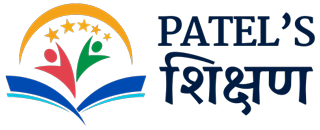Have you ever seen a small box or bag with red cross marks on it?
That is called a First Aid Kit.
A First Aid Kit is a small box or bag that has important things used to give quick help when someone gets hurt, feels sick, or has an emergency.
It is not for big hospital treatments, but it helps to take care of small injuries and keep a person safe until a doctor can see them.
Example: If you fall while running and get a small cut, your parents can clean the cut and put a bandage from the First Aid Kit.
Why Do We Need a First Aid Kit?
First Aid Kits are important because accidents can happen anytime.
They give quick help before a doctor arrives.
They stop small problems from becoming big problems.
They keep us safe at home, school, while traveling, or even on the playground.
Example: If someone burns their hand while cooking, cold water and a burn cream from the First Aid Kit can help immediately.
Where Can We Find a First Aid Kit?
First Aid Kits are kept in many places so help is always nearby.
At Home – in kitchens or living rooms.
In Schools – in the nurse’s room or classrooms.
In Cars and Buses – for emergencies while traveling.
In Workplaces – offices, shops, and factories.
Public Places – airports, railway stations, and malls.
Example: In schools, teachers use the First Aid Kit when children get scratches while playing.
What Does a First Aid Kit Look Like?
A First Aid Kit can be:
A small box (plastic or metal).
A zip bag (easy to carry while traveling).
A large cupboard (in schools or hospitals).
It often has a red cross sign (✓) so everyone can recognize it easily.
Example: At home, your family may keep a small green or red box marked with a cross symbol.
Things Inside a First Aid Kit
A First Aid Kit has many useful things.
Let’s see the main items:
(a) Bandages and Plasters
Used to cover cuts, wounds, or scratches.
Prevent germs from entering the body.
Example: If you cut your finger with paper, a small plaster can cover it.
(b) Cotton and Gauze
Cotton: used to clean wounds.
Gauze: soft cloth to cover big wounds.
Example: If you get a nosebleed, cotton is used to stop the blood.
(c) Antiseptic Lotion or Cream
Kills germs on cuts and wounds.
Example: Applying antiseptic before bandaging stops infection.
(d) Scissors and Tweezers
Scissors: cut bandages or tape.
Tweezers: remove small things like thorns or glass pieces.
Example: If a thorn pricks your foot, tweezers help remove it.
(e) Pain Relief Spray or Gel
Used for sprains and muscle pain.
Example: If you twist your ankle while running, a spray can give relief.
(f) Burn Cream
Used when someone burns their skin.
Example: Touching a hot pan may cause a burn, so burn cream helps.
(g) Thermometer
Measures body temperature.
Example: When you have fever, parents use a thermometer from the kit.
(h) Gloves and Masks
Gloves protect hands while giving First Aid.
Masks protect from germs.
Example: Nurses and doctors wear gloves and masks when helping patients.
(i) Safety Pins and Tape
Used to fix bandages.
Example: If your bandage is loose, a safety pin keeps it in place.
(j) Some Medicines
Fever tablets, painkillers, or cough syrup.
Example: If you have a headache, a mild medicine may be used.
Simple First Aid Steps for Kids to Learn
Here are some easy steps kids should know (always with the help of an adult):
(a) For Small Cuts or Scratches
Wash your hands.
Clean the wound with water.
Apply antiseptic cream.
Cover with a plaster.
Example: Falling while cycling can cause a knee cut – use these steps.
(b) For Nosebleeds
Sit straight, don’t lie down.
Pinch the nose gently.
Use cotton to stop the bleeding.
Example: If your friend’s nose bleeds in the playground, these steps can help.
(c) For Burns
Put the burned area under cool running water.
Apply burn cream.
Cover lightly with gauze.
Example: A small kitchen burn can be treated this way.
(d) For Sprains
Rest the hurt area.
Put an ice pack.
Use a pain relief spray.
Example: Twisting an ankle while jumping can be treated like this.
Who Can Use a First Aid Kit?
Parents
Teachers
School nurses
Sports coaches
Even kids (with guidance)
Example: A teacher may use it when a student gets hurt during a football match.
Rules for Using a First Aid Kit
Always keep it clean and dry.
Check that medicines are not expired.
Restock items after using them.
Keep it in an easy-to-find place.
Children should use it with adults only.
Example: If all the bandages are used up, new ones must be added.
Different Types of First Aid Kits
There are different kinds of kits depending on where they are used:
Home First Aid Kit – small and simple.
Travel First Aid Kit – light and easy to carry.
School First Aid Kit – bigger, with many supplies.
Sports First Aid Kit – includes sprays and support bandages.
Workplace First Aid Kit – has safety equipment.
Example: A sports coach carries a special kit for players in case of injuries.
Why Every Kid Should Know About First Aid Kits
To stay safe.
To help others in need.
To feel confident in emergencies.
Example: If your friend falls while playing, you can bring the First Aid Kit to help.
